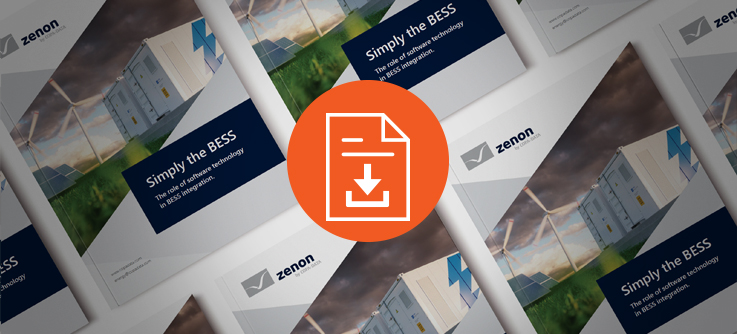The grid is designed to work under specific electrical supply conditions. In Europe, there are 400 volts and 50 hertz of alternating current. and if the electrical supply violates these parameters too excessively, by value or for a certain period, devices can malfunction.
A balance of supply and demand in the grid is absolutely necessary, but this isn’t necessarily easy with the volatile nature of renewable energy sources. For instance, if there is too much energy pumped into the system — such as from a particularly windy day at a wind farm — the supply frequency will rise. Likewise, if the current consumption level cannot be covered by the renewable energy providers, the frequency drops.
While grid calculations and active monitoring can attempt to address this challenge, renewable energy operations need a more reliable solution.
BESS is the answer
Battery energy storage systems (BESS) are an essential method of storing excess power. Likewise, a lack of available energy can also be temporarily compensated with the amount of energy stored in a BESS.
The battery energy storage system can be instructed to act as three components, a consumer (charging), a generator (discharging) and as neutral (idle). From this, the use of energy from renewable generators can be maximized, as excess energy is preserved and provided to the grid — smoothing the volatility of renewable generation.
Crucially, this helps to operate renewable generators more economically and to relieve the grid from overly fluctuating generative shares.
A more economic grid
BESS can help to stabilize frequency or voltage, provide black start services and can even be used to respond to unexpected instances on the grid. For instance, providing emergency energy following generator failure.
Grid congestion also represents a major challenge for many utilities companies. In these instances, a large scale battery energy storage system can help to cover demand without having the instant need to reinforce or rebuild powerlines. Battery storage facilities, which are located at strategic sites in the grid, can therefore build a so-called virtual powerline.
Virtual powerlines describe transferring energy from generation to the end users‘ BESS system during low-demand periods, to build a pool of electrical energy closer to the user‘s location. As a result, the coverage of peak energy demand is supported by local storage and there is less load required to flow through the remote supply lines.
Using this method, utilities companies can support and optimize the utilization of their assets and thus, defer costly investment into reinforcing or building entirely new powerlines.
However, BESS comes with the challenge of integration with renewable energy systems. For this reason, automation and energy data management are essential for effective implementation.
Software support
To enable BESS integration to the grid, advanced software platforms are required to orchestrate the communication between renewable generation, energy consumption and storage. This connectivity is needed to provide visibility for operation and monitoring of an entire grid.,
COPA-DATA’s zenon can orchestrate this by communicating with several different levels of renewable energy processes, such as solar PV, wind farms or large scale BESS. With capabilities in substation automation and network control solutions, as well as allowing industrial users to automatically acquire energy data, zenon is able to provide efficient, scalable and sustainable energy systems alongside a battery energy storage system.
And while the application of large scale BESS is still in its infancy, it has heaps of potential. However, to integrate this seamlessly onto the already complicated grid, adequate software is required to monitor, manage and analyse these systems and their performance.
zenon is the industrial automation system necessary for renewable energy operations to reap the benefits of BESS.
Do you want to learn more about BESS?
Our newest White Paper analyzes BESS and shows how it can be simplified via software automation. It addresses topics that will enable sustainability through balanced energy demand and delivery control.



